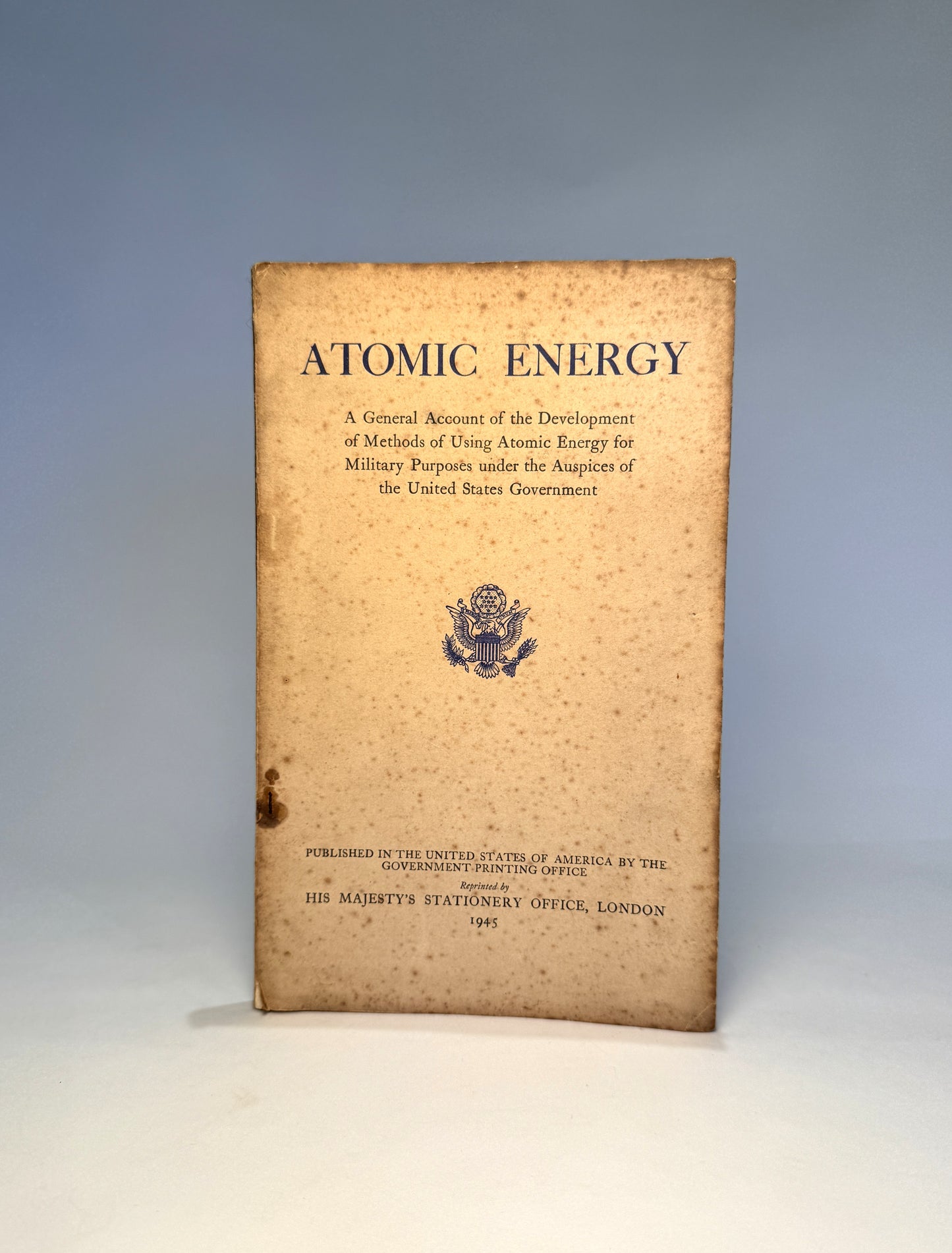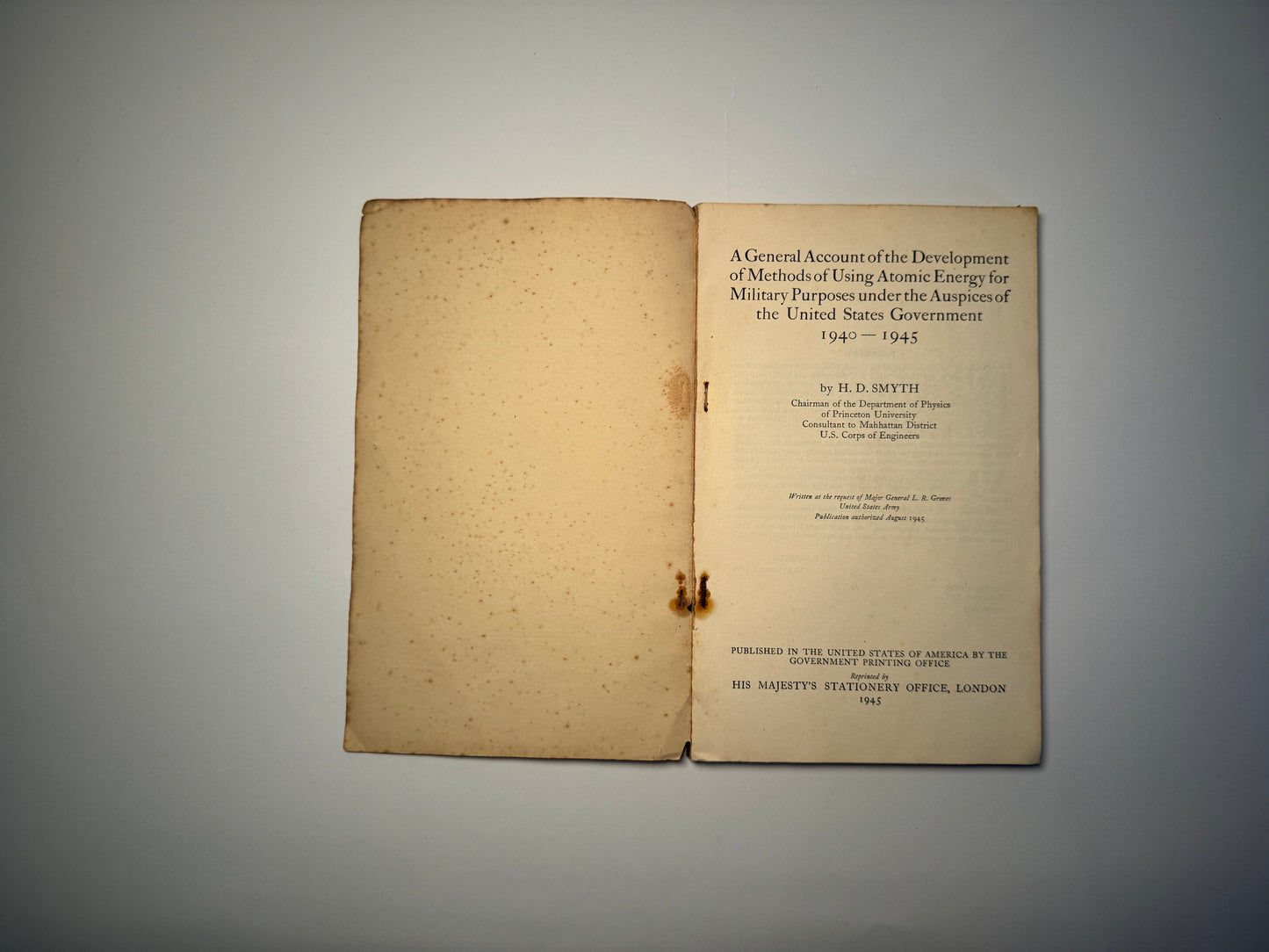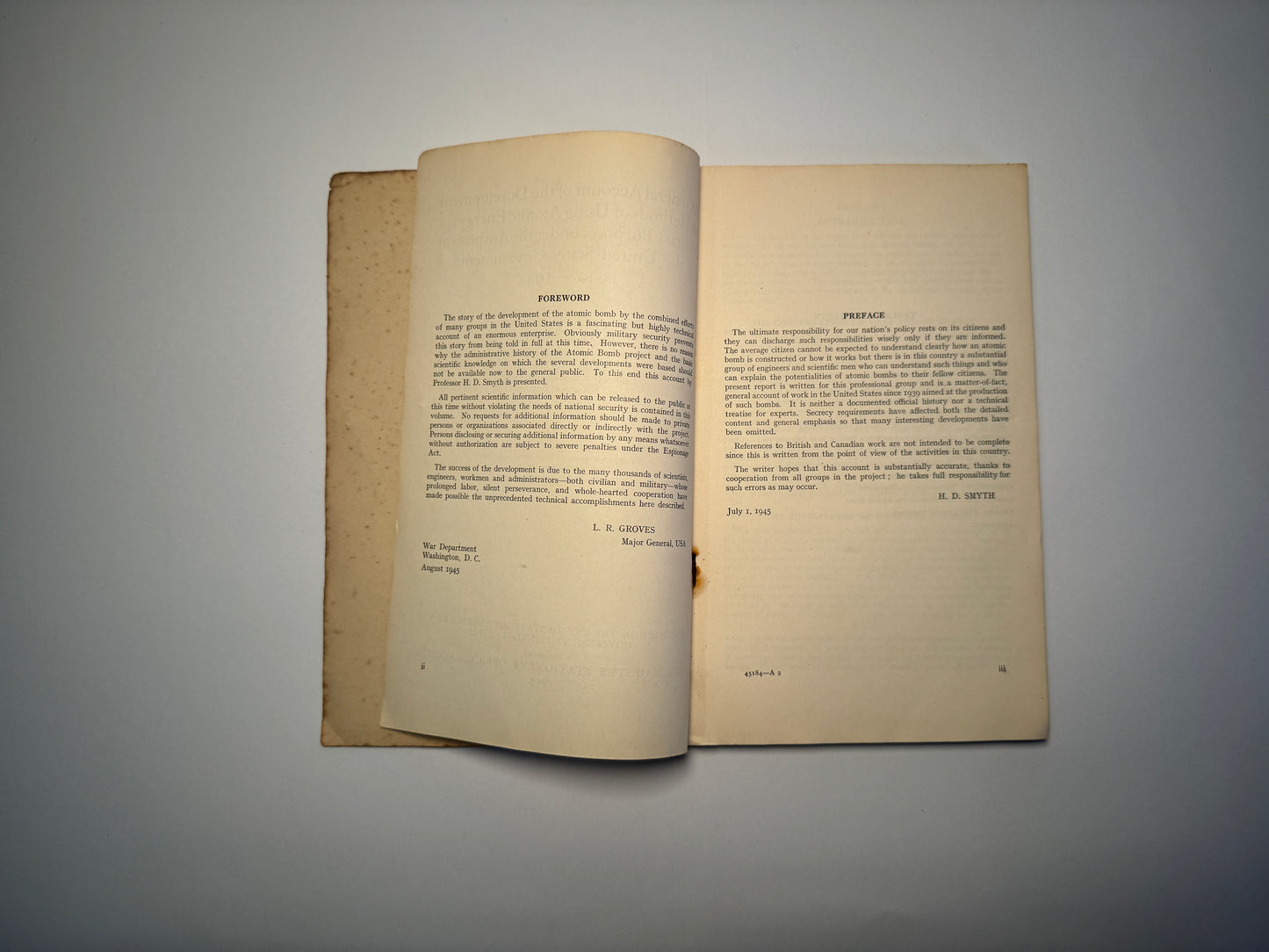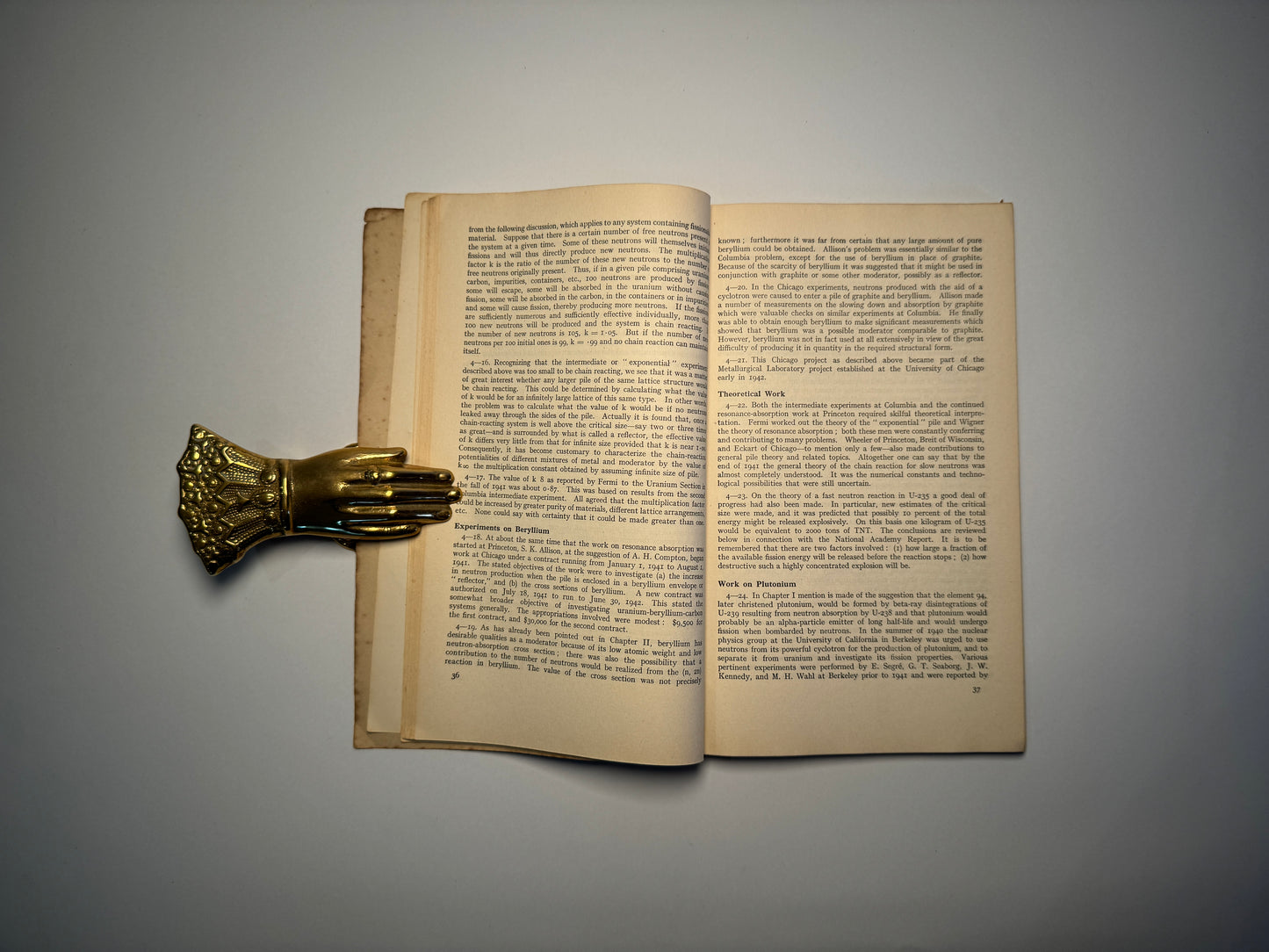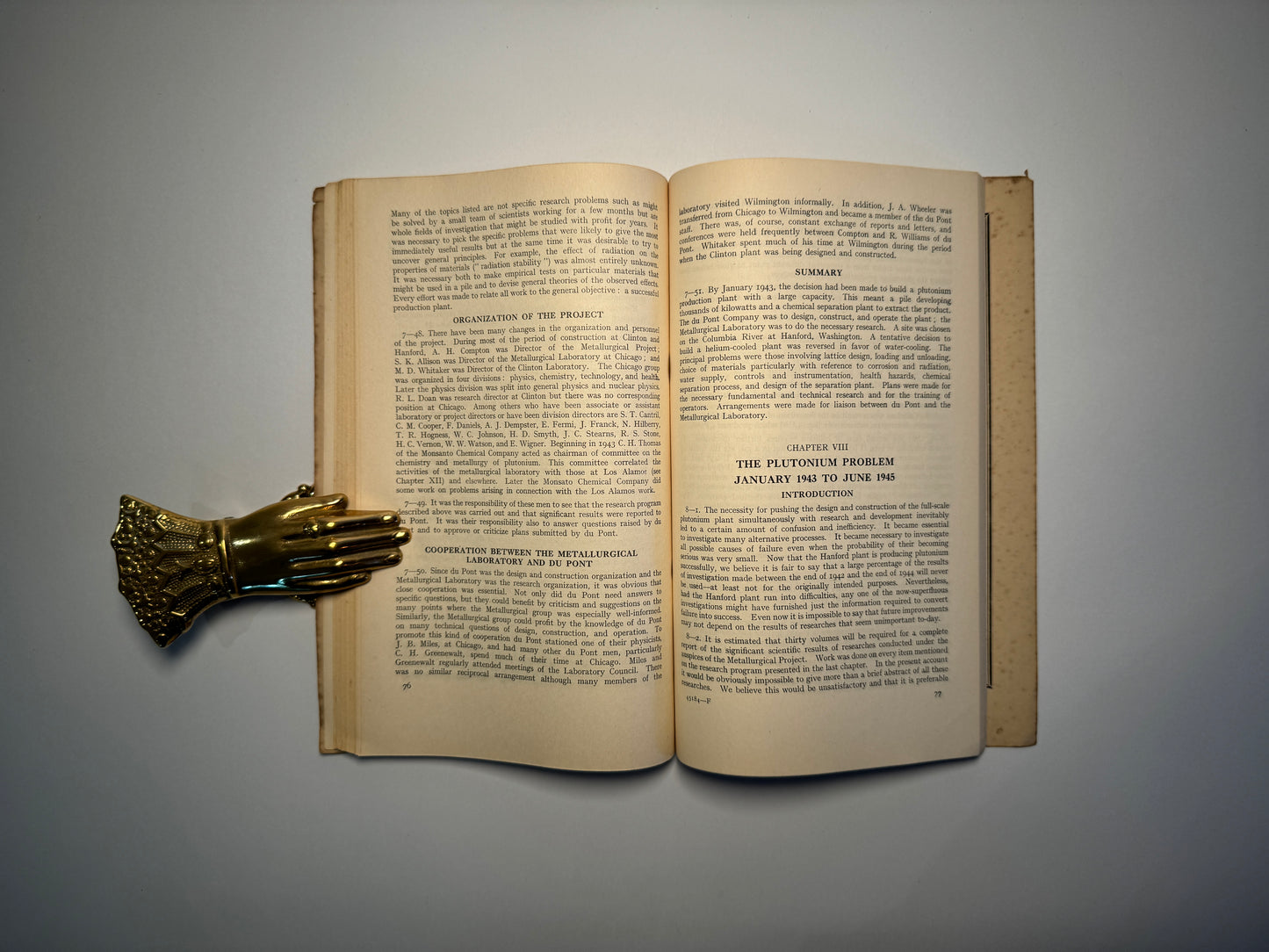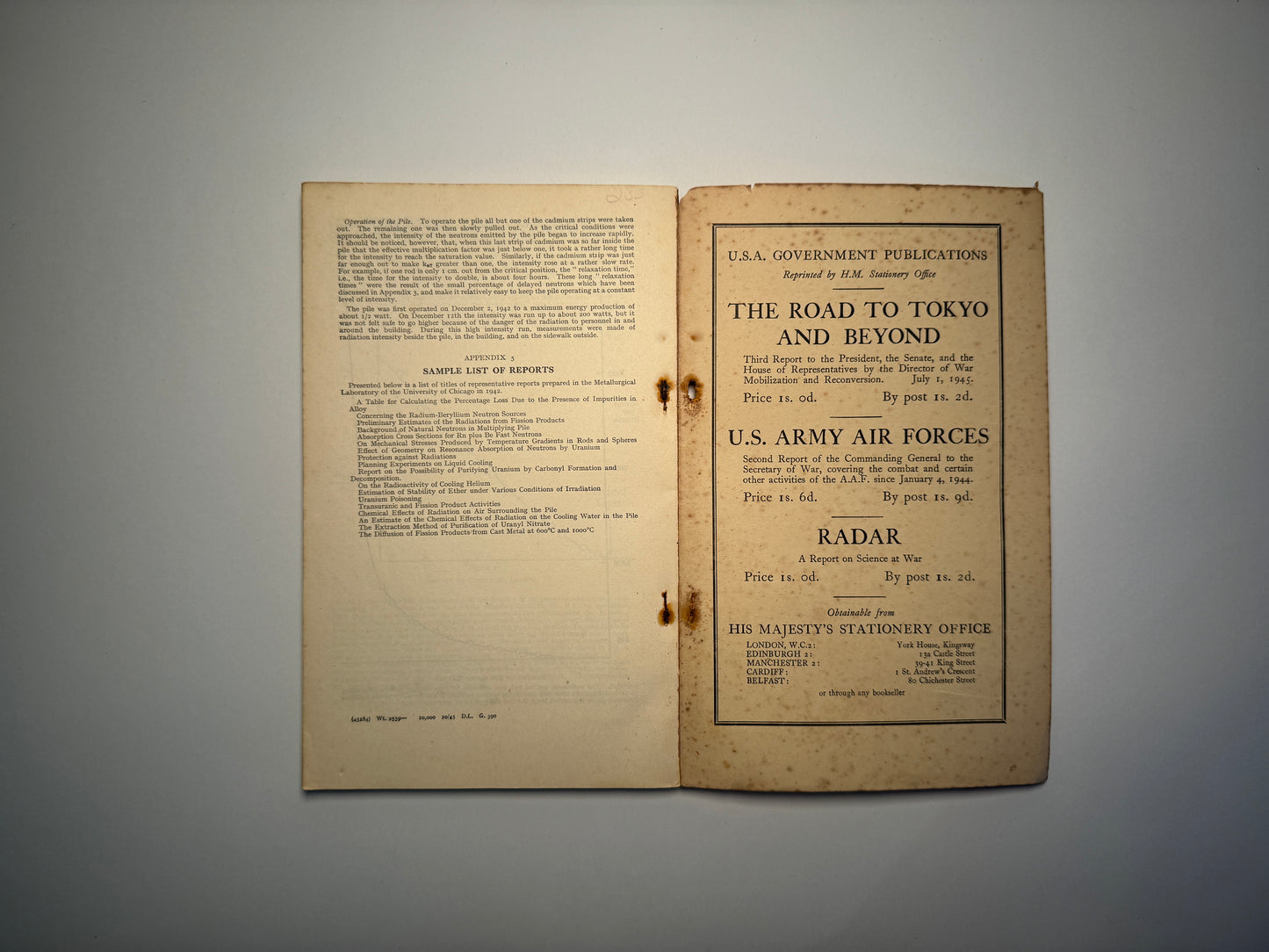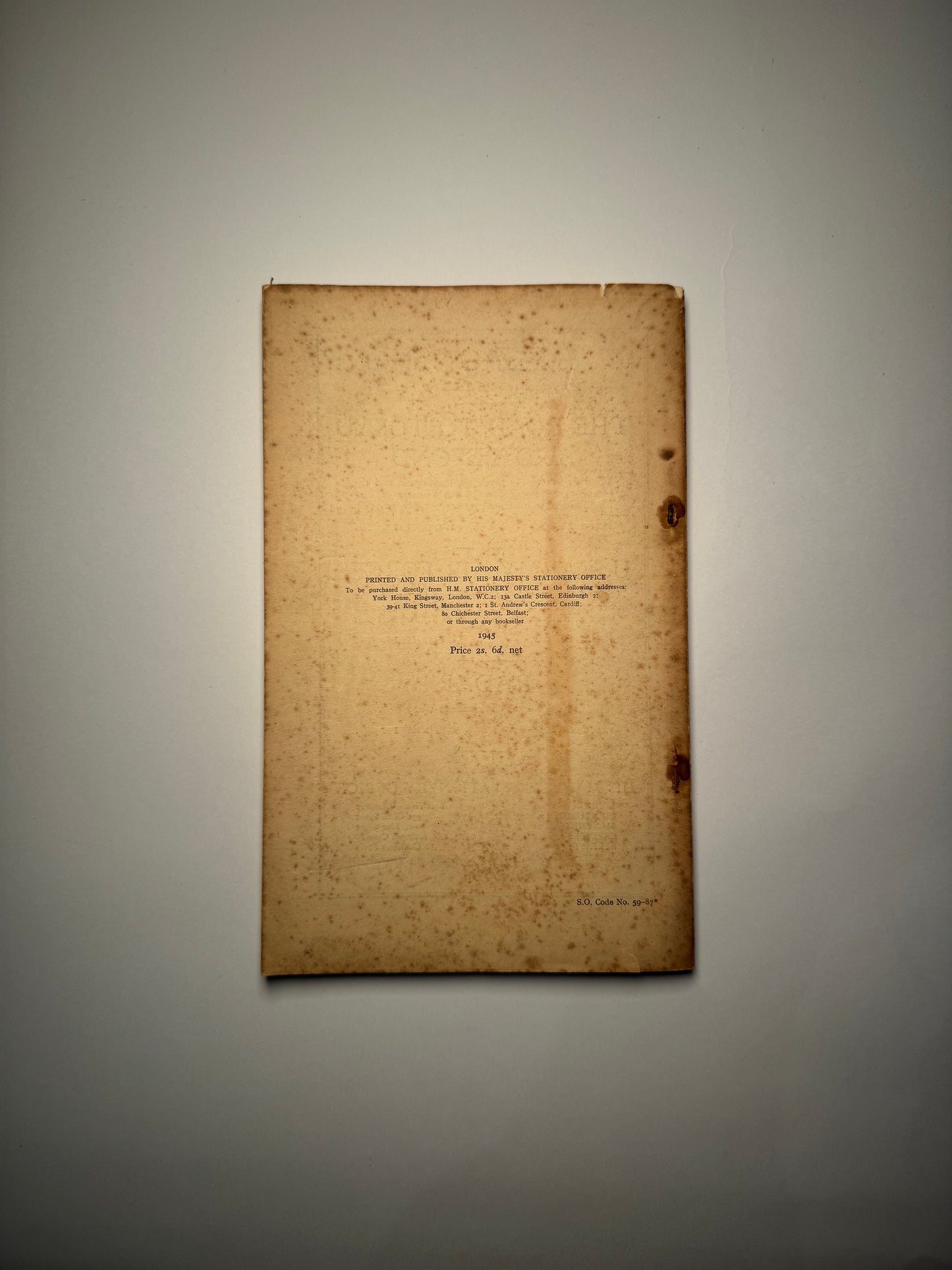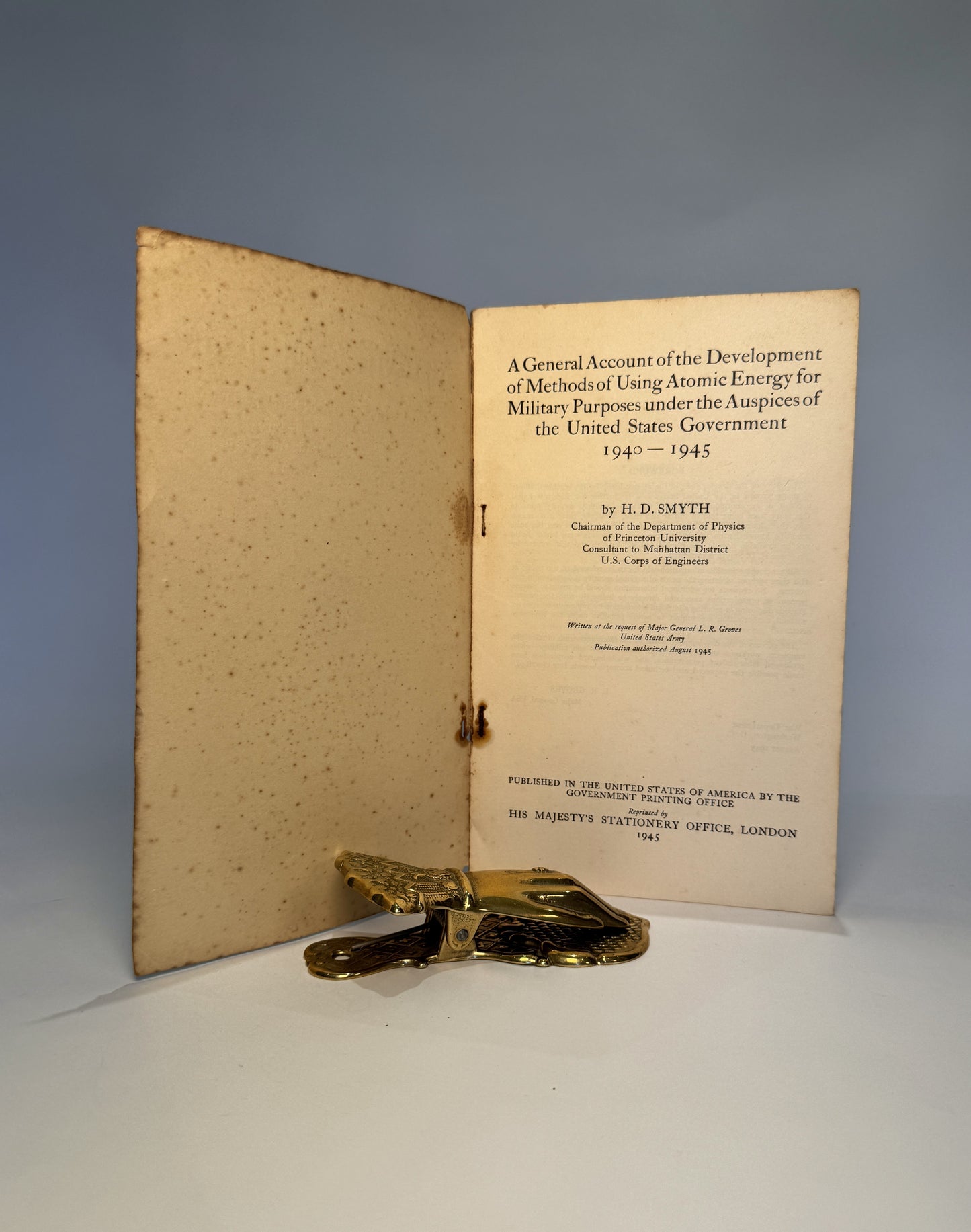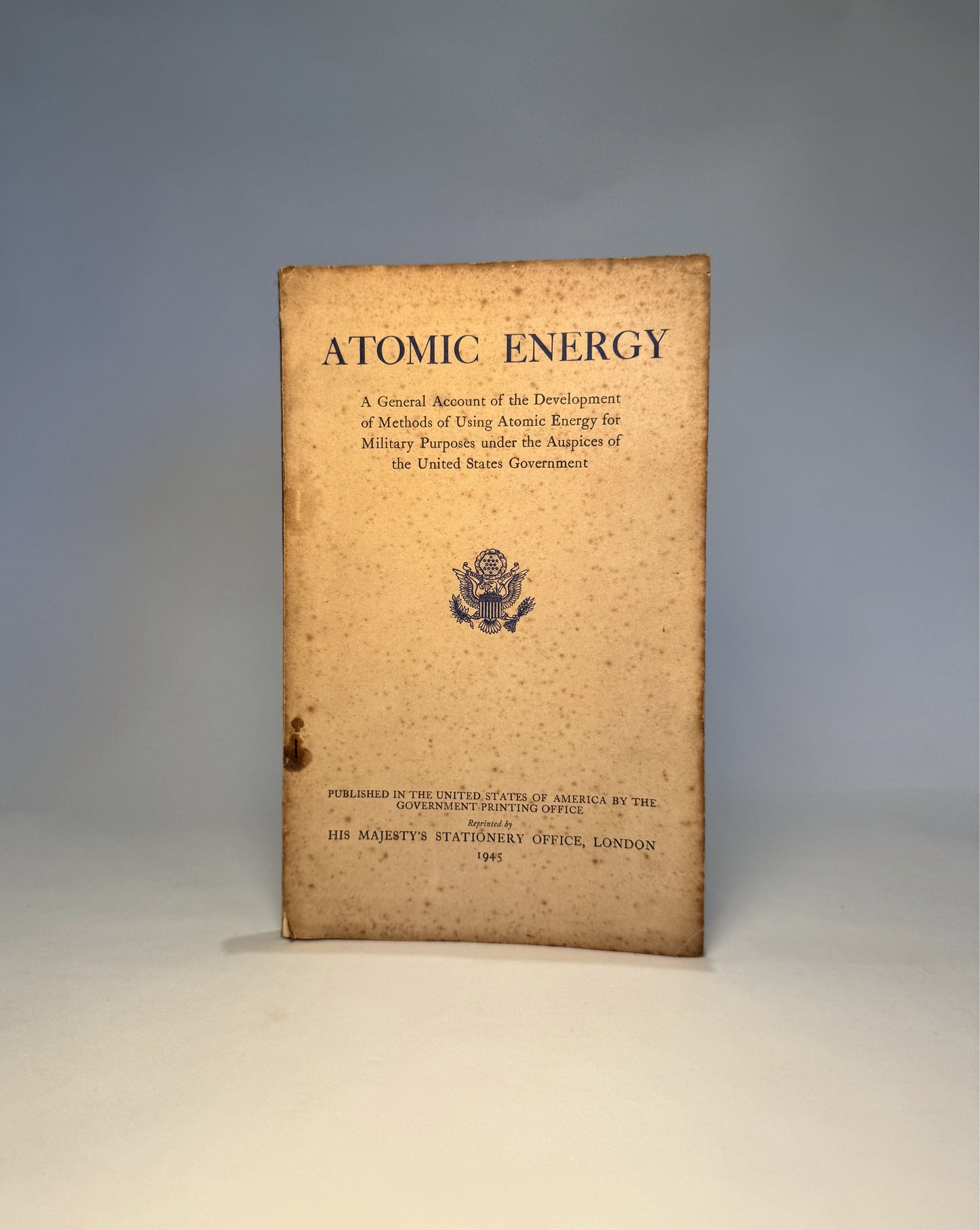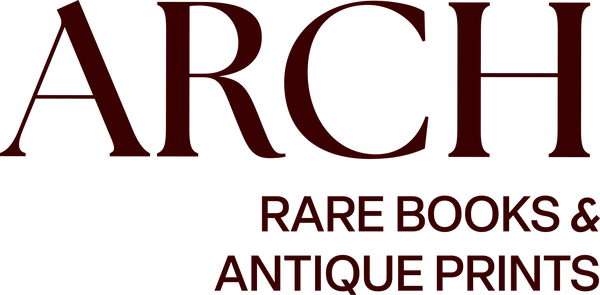Arch Rare Books & Antique Prints
Original Smyth Report: Atomic Bomb Development 1940-1945
Original Smyth Report: Atomic Bomb Development 1940-1945
Couldn't load pickup availability
This exceptionally rare first British edition of A General Account of the Development of Methods of Using Atomic Energy for Military Purposes Under the Auspices of the United States Government 1940-1945, more commonly known as The Smyth Report.
This historical document details the top-secret Manhattan Project, the Allied effort during World War II to develop the atomic bomb. Written by physicist Henry DeWolf Smyth, the report provides a comprehensive account of the scientific breakthroughs, engineering challenges, and secret laboratories (including Los Alamos, Oak Ridge, and Hanford) that led to the creation of the world's first nuclear weapons.
This specific edition is a small 4to (245 x 153 mm) and is presented in its original buff paper wrappers, reprinted from the very scarce U.S. Government Printing Office edition. It includes numerous formulas and diagrams, providing a fascinating glimpse into the science behind nuclear fission and the nuclear chain reaction. The wrappers show only minor spotting, and the text remains near pristine, a remarkable condition for such a fragile and important document. It is now housed in an attractive fold-over case of tan buckram with a black morocco label gilt ruled and lettered, ensuring its preservation for future generations.
This Smyth Report is not just a scientific record; it's a pivotal document that announced the dawn of the atomic age and a new world order. As PMM (Printing and the Mind of Man) notes, it's a "remarkably full and candid account" of the Manhattan Project. The report was initially released to the press on August 12, 1945, after the atomic bombings of Hiroshima and Nagasaki, and served to inform the American public about this groundbreaking technology.
This first British issue is exceptionally scarce. The mimeographed prepublication issue, from which this was reprinted, was produced in the War Department and is exceedingly rare, often found in poor condition. This British reprint offers collectors a chance to own a piece of this crucial historical narrative.
While the Smyth Report was intended to inform the public, it also inadvertently provided valuable information to the Soviet Union, aiding their own atomic bomb project. This edition, like the original U.S.G.P.O. printing, includes the detail about the "poisoning" effect in the production reactors, later removed from the Princeton edition.
Share
